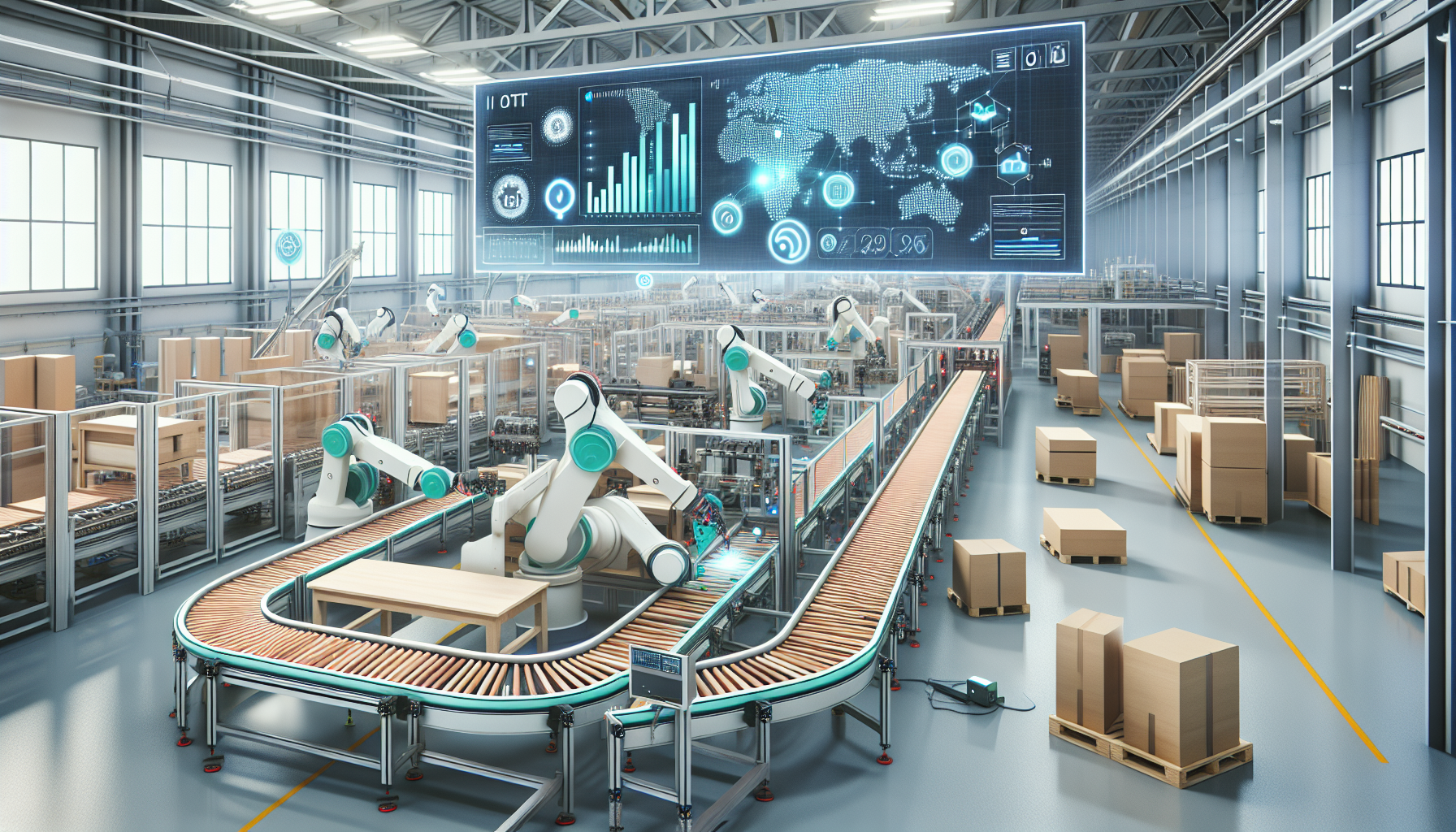In the developing furniture industry, automation is a dominant factor that affects most manufacturers, especially the furniture hardware. This article will discuss why automation is critical for the furniture hardware production line in the future and for the B2B firms.
In the furniture hardware industry especially in the global market, speed, quality and ability to cover large markets with the quality products are the key success factors. The market for high end cabinet hardware brands and other hardware brands is moving towards automation to maintain competitiveness. This article takes time to discuss why automation is disruptive in producing furniture hardware and the role it plays for B2B organizations.
Benefits of Automation
Automation provides furniture hardware manufacturers with several benefits, making production faster and quality steady.
Efficiency and Speed Improvement
Automation is among the most value added tools for increasing production ·output in the modern world. Using automatic machines means that there could be no much down time hence higher productivity. This efficiency helps manufacturers to deliver orders within short time frames and large orders from business-to-business consumers such as pre suppliers of luxury cabinet hardware brands.
Accuracy and Quality Assurance
Precision is made sure through automation in the manufacture of products. CNC machines are used in the production of standardized products; these technologies ensure that measurements and cuts are precise and do not contain any inconsistencies. This consistency is crucial for the hardware brands that aspire to retain their position in this saturated market.
Cost Reduction
Automation technology may be very expensive initially, but it’s a very cost effective way of running a company. Reducing dependence on human labor reduces costs incurred on wages, controlling the usage of material leads to saving on material used in products with many defect cases hence minimizing the overall cost. These savings help manufacturers to propose reasonable prices for their products for B2B clients.
Technology Driving Change
Robotization of furniture producer’s hardware is done through use of modern techniques.
Robotics in Hardware Manufacturing
Robot/automation is involved most in assembly lines, welding and painting jobs. Another advantage of these firms is that they deliver similar tasks for several brands of hardware with a lot of precision.
IoT Integration
IoT improves automation by extending whether processes are monitored or not as well as the data they generate in real time. IoT offers data regarding the performance of the machines, predictive data about the time when the machines would require maintenance, and data regarding stocks required for their production, thereby making it easier for these high-end companies in the cabinet hardware market to organize their production lines.
AI and Machine Learning
They utilize AI and machine learning algorithms and carry out modifications that bring efficiency in production. It is possible to use these technologies to foresee customer demand patterns and optimize supply routes to satisfy the B2B customers’ requirements in manufacturing.
Market Demand for Automation
Several market forces compel furniture hardware manufacturers to automate their production processes.
Rising B2B Expectations
The B2B customers particularly those involved in the cabinet hardware industry demand delivery, high quality standard and fairly priced products. There are high expectations from customers to such hopes of automation as it meets the necessary demands for scalability and reliability.
Customization Trends
Even when furniture becomes individualized further, there is an increased need for unique hardware. Technology enables the customization of output by the hardware brand companies to create many products efficiently.
Global Competition
The competition in the furniture hardware market is fairly intense on the global level. Manufacturers should embrace automation to ensure that they are better placed to respond to the changing market conditions and thus cut lead times.
Challenges and Solutions
However, there are complications that are associated with the process of automation which manufactures face.
Initial Investment
One disadvantage of employing automation technologies is that they are rather expensive to set up in organizations. But these issues can be addressed by the government incentives, financing and long term analysis of investments and their returns.
Workforce Adaptation
What’s more, this move shifts talent to a different location. Lack of needed skills can be solved by reskilling, which means that manufacturers need to allocate funds to provide employees with new competencies for operative and maintenance tasks with technological tools.
Cybersecurity Risks
Combined with the IoT and AI, security is a prominent issue that is a major focus in today’s system solutions. Since a lot of companies rely on manufacturing companies, it is imperative that manufacturers protect their systems appropriately.
The Future of Automation
The future of furniture hardware production, therefore, has to accommodate automation technologies but in a more integrated system.
Smart Factories
The IoT and AI integrated smart factories will be the normal in the industry. These facilities will be decentralized, where all processes are managed independently, based on streaming data.
Sustainable Practices
Thus the efforts that intend to automate various tasks and functionalities in as much as they empower more efficiency, acts as a way of cutting wastage and eventual energy loss. A trend for high-end cabinet hardware brands is environment friendly practices that automation can support.
Partnership and Creativeness
The relationship between the providers of the hardware and those of the technology will be the next key influencer. The B2B clients will be able to benefit from innovative concepts that entail appearance, use and endurance.
Automation is not something that is trending, but it is the path furniture hardware of the future will follow. In the case of B2B companies, automation is all about the capacity to compete and the capacity to satisfy their clients’ needs as well as the recognition of the global challenge that is at the heart of the fast growing world. These technologies are gradually taken up by more hardware brands and high end cabinet hardware brands and therefore the industry is close to realizing high end efficiency and innovations.
That way furniture hardware manufacturers can build the right portfolio of competitive strategies in the global B2B furniture marketplace by capital investment in automation now.





